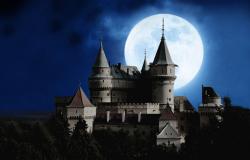Photographers, although they must respect image rights, can in certain cases photograph or film a person without their consent.
The distribution of photographs of children online is regulated to prevent use by people with malicious intent.
Whatever the building immortalized (home, building, museum, etc.), the question of copyright may arise.
Perhaps you are one of those people who happily puts themselves behind the lens, but protests when their photo is taken. According to a Harris Interactive survey carried out in 2022, 75% of French people prefer to take a photo rather than be the subject. Today, you just need to take out your smartphone to immortalize a face, a landscape, a monument or a street scene. Although the gesture is easy and quick, it is better to think before photographing or filming a person or a building, particularly if the image is published on media.
-
Read also
Is it true that it is forbidden to photograph the Eiffel Tower after dark?
Can you photograph someone in a public and private place?
As a person, you benefit from image rights, which allows you to authorize or refuse the reproduction and public distribution of your image, explains the government Service Public website. Also called the right to erasure, the right to be forgotten allows you to request the deletion of your image (photo or video) from a website.
Photographers must obtain authorization from the person photographed if they are recognizable in a public or private place (family event, vacation, etc.). However, exceptions exist: if it concerns a right to information, freedom of expression or artistic and cultural freedom, and the image respects the dignity of the person. For example, you have the right to photograph an elected official in a public event without their consent, but not sunbathing on a beach with their family.
The written agreement must specify the exact medium for disseminating the image, its objective and its duration. In the event of non-compliance with image rights, you risk sanctions. Photographing or filming someone in a private place or transmitting their image without their consent is punishable by one year of imprisonment and a fine of 45,000 euros (article 226-1 of the Penal Code).
Be careful if you distribute the image of a child!
Just like adults, children are protected by image rights. For a minor, parental authorization is required, explains Service Public. For example, his school cannot publish images of him on its website without the written authorization of his legal representatives.
The law of October 19, 2020 regulates the activity of a child under sixteen whose image is distributed on an online video platform such as Instagram, YouTube or TikTok. If the child is the main subject of the video, their legal representatives must make a declaration to the National Commission for Information Technology and Liberties (CNIL). The objective is to regulate the dissemination of images of children and to protect their privacy.
Minors have the right to erasure and forgetting. Upon simple request, and without the consent of their parents, they can demand that the platforms remove the videos.
Photographing a building, yes, but not just any old way!
Houses sometimes have beautiful facades that attract the eye of amateur photographers. Taking a photo of a home is possible provided that you do not infringe on the privacy of the occupants and do not cause them any abnormal disturbance, by revealing the address for example.
On the other hand, a house protected by copyright, that is to say an architectural work of unique character, can only be photographed with the agreement of its author (article L122-4 of the Property Code intellectual) due to image rights.
Buildings and monuments are subject to copyright, which ends 70 years after the death of the creator. For example, the Louvre pyramid, built in 1989 by architect Ieoh Ming Pei, cannot be photographed for commercial purposes (article L621-42 of the Heritage Code). On the other hand, nothing prevents you from taking a selfie in front of a monument, which simply serves as a backdrop.
When visiting the capital, you have the right to photograph and publish an image of the Eiffel Tower but be careful, night lighting is protected by intellectual property. For this reason, you cannot distribute the photograph on a publicly accessible medium.






